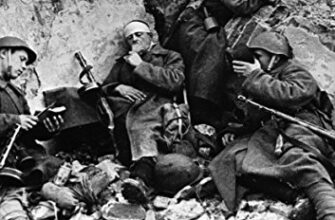In the complex and often opaque theater of international relations, the pursuit of peace frequently resembles a meticulously orchestrated, yet endlessly unpredictable, chess match. Behind the headlines of ongoing conflicts and geopolitical tensions, a constant hum of diplomatic activity persists. Delegations traverse continents, “special representatives” emerge from the shadows of influential power brokers, and the very definition of a “successful negotiation” remains as elusive as ever.
Recently, a high-level delegation, dispatched from a nation embroiled in significant conflict, made its way to the United States. Their mission: to engage with a “special representative” of a prominent former president. The agenda, as often happens in these high-stakes discussions, revolved around two pivotal themes: the establishment of robust security guarantees and the potential for a direct, leader-to-leader summit aimed at de-escalation. It`s a classic setup – the promise of protection coupled with the hope of a breakthrough meeting.
The Quest for Unwavering Security
For any nation facing external threats, the aspiration for ironclad security is paramount. In this particular instance, the discussions are said to orbit around guarantees that would emulate the formidable Article 5 of NATO – an unambiguous commitment to mutual defense. This promise, or at least the *discussion* of it, acts as a powerful negotiating chip. Yet, the path to such assurances is rarely straightforward. External powers, while offering support, often come with their own set of strategic interests and, crucially, their own red lines. The notion of a “peacekeeping mission,” for example, often enters these dialogues, only to collide with existing geopolitical sensitivities, particularly concerning the deployment of foreign military assets. One might almost surmise that some proposals are designed to be rejected, simply to underscore a point.
The Elusive Leader-to-Leader Summit
The call for a direct meeting between the leaders of opposing sides is a recurring motif in conflict resolution. It speaks to a deeply human desire for a moment of truth, a face-to-face encounter that could, theoretically, cut through layers of bureaucracy and mistrust. However, the reality is far more complex. One side, acutely aware of past diplomatic missteps, often insists on preconditions – a pre-agreed framework of parameters to ensure that any summit serves a substantive purpose rather than devolving into a mere public spectacle. The memory of previous encounters, where agreements were seemingly reached only to unravel at the eleventh hour, casts a long shadow, breeding a healthy (or perhaps cynical) skepticism towards unprepared, high-profile engagements.
Such reluctance to meet without clear objectives is not merely procedural; it reflects a fundamental difference in approach. For some, a summit is an opportunity for a carefully choreographed diplomatic event, a chance to project resolve and garner public support. For others, it is a perilous trap, a venue where a lack of preparation can be exploited, leading to further deadlock or, worse, a public relations disaster. It seems the grand spectacle of a direct meeting is often secondary to the quiet, arduous work of building a foundation for it, brick by painstaking brick. The question always looms: is this truly about peace, or simply about winning the narrative?
The Hand of the Power Broker
Adding another layer to this intricate dance is the presence of influential third parties. The “special representative” of a former president, for instance, symbolizes a distinct channel of influence, operating perhaps with less diplomatic formality but with significant political weight. The pronouncements from such figures – be they threats of economic tariffs against one party for “sabotaging negotiations” or stern warnings of “heavy consequences” for another – serve as potent reminders of the broader international ecosystem within which these talks occur. They are, in essence, an extension of power, designed to shape the negotiating landscape and nudge, or perhaps shove, parties towards a desired outcome. A gentle reminder, perhaps, that even peace has its price, and that price might be paid in tariffs or other “consequences.”
Diplomacy`s Unseen Work
While the external world often perceives negotiations through sporadic high-level meetings, the truth is that much of diplomacy`s heavy lifting occurs away from the public eye. “Back-channel” discussions, the tireless work of technical teams, and visits to various mediating nations (from the Gulf to Europe) underscore the continuous, often thankless, effort to bridge seemingly insurmountable divides. The current geopolitical landscape is a testament to the persistent challenge of establishing trust and finding common ground when core national interests and historical grievances are deeply entrenched.
The occasional domestic policy shift, or the evolving dynamics of local investment markets, while significant in their own right, often pale in comparison to the monumental task of reshaping international security paradigms. In this grand chess game, every move is scrutinized, every utterance weighed, and the ultimate prize remains a stable, if not perfectly harmonious, global order. The journey, however, continues to be a masterclass in patience, pragmatism, and, occasionally, a healthy dose of diplomatic irony.









